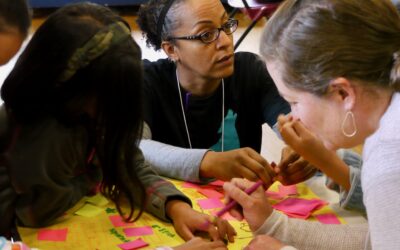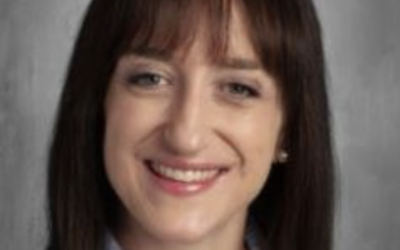
Introduction to anchoring events
How to contextualize anchoring events to support challenge and learning
Planning units using anchoring events: The process
What are scientific models? What kinds of models are good for K-12 modeling?
How students can model events and process over the course of a unit
Revising models and allowing students to show what they know
A Teacher's Story
Middle/High School Teacher Story:
I am an instructional coach in a middle school, but facilitating High School science curriculum work in my district. I am a former HS science teacher and have been an instructional coach for the last five. Our high school science curriculum needed updating to more closely align with the NGSS–particularly to incorporate the SEPs and CCCs. We have started with re-designing the curriculum for our two core courses (required by all students for graduation), Earth science and biology.
Our district has strong science teachers who have a deep knowledge of their content, they just needed to update their instructional pedagogy and practices. After reviewing some already created resources, the teachers felt strongly that they wanted to continue to create their own. To meet them in the middle, we began working with Melissa Braaten on AST, so that we could shift pedagogy to include phenomena, discourse, modeling, etc. We continued to emphasize the importance of discourse and modeling so that all students could participate in the learning.
Teachers piloted an AST-designed unit in the spring and their work was fantastic. Teachers shared student modeling posters, artifacts, assessment data, etc. Several teachers reported that they finally understood how to get all students to participate in discussion. Others reported that students performed better on the assessment because they had tied all of their learning back to the phenomenon. Teachers also reported that their teaching didn’t feel so disjointed with isolated labs/learning activities–that everything had a purpose related to the phenomenon.
Suggestions
I highly recommend that teachers take a leap of faith and dive into piloting/trying this methodology. Every day we ask students to be uncomfortable in order to learn, as teachers, we need to model this behavior! AST benefits all students and leads to better learning outcomes for all!




 This site is primarily funded by the National Science Foundation (NSF) through Award #1907471 and #1315995
This site is primarily funded by the National Science Foundation (NSF) through Award #1907471 and #1315995